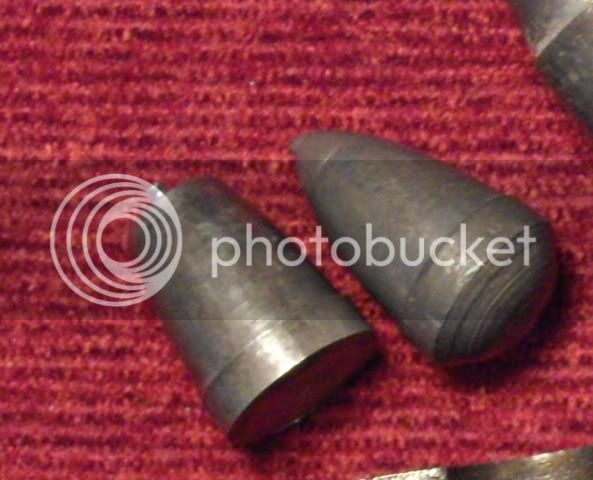Its not about remaining velocity its about trajectory. Apparently a number of people don't understand this.
With a HV load a 54, properly zeroed say on at 105 or 110, will stay on a deer's kill zone from 0 to 130+- yards.
This means if you hold center on the deer from 0 to 130 it kills the deer.
No worry about how much to hold over no extra sights. Just hold center and press the trigger.
Slight holdover but still "in the hair" will kill at 150.
THIS is the advantage of HV loads.
Many in the east never shoot over 40-70 yards. At this distance 50-60 grains will kill the deer (an 8" barreled pistol in 54 will kill deer dead at 25-40 yards) if the trajectory is not such that making hits is difficult. Hunters in the west may not be as lucky though I killed 2 deer under 50 yards this year. The last deer I shot was 105 yards offhand. Only shot I had and given the deer population crash it was probably the only shot I would get. No way to take a rest just do the shot.
If the rifle was loaded and sighted to be on at 75 this shot would have required hold over more than likely.
With a proper ball fit 1/2 ball weight or a little more of powder will not foul excessively.
Most of the points made concerning HV loads are apparently being "made" by people who have never actually used them.
I once had a 54 percussion that was disappointingly inaccurate with less than 120 gr of FFF going up there was little change in accuracy until 120, 110 poor, 120 good, the groups tightened dramatically. It made the rifle into a hunting gun rather than a wall hanger. I have a 54 flint that really does not like light loads and I use 100 gr of FFF in it.
Most rifles will actually produce the smallest groups with powder charges at or over 1/2 ball weight in 50-54 caliber.
Some people have reported 60-70 as an accuracy load in 40 cals.
HV loads spend more time in the high drag ranges and thus tend to slow faster. But they still shoot flatter at any distance than the lower velocity loads will.
Dan
With a HV load a 54, properly zeroed say on at 105 or 110, will stay on a deer's kill zone from 0 to 130+- yards.
This means if you hold center on the deer from 0 to 130 it kills the deer.
No worry about how much to hold over no extra sights. Just hold center and press the trigger.
Slight holdover but still "in the hair" will kill at 150.
THIS is the advantage of HV loads.
Many in the east never shoot over 40-70 yards. At this distance 50-60 grains will kill the deer (an 8" barreled pistol in 54 will kill deer dead at 25-40 yards) if the trajectory is not such that making hits is difficult. Hunters in the west may not be as lucky though I killed 2 deer under 50 yards this year. The last deer I shot was 105 yards offhand. Only shot I had and given the deer population crash it was probably the only shot I would get. No way to take a rest just do the shot.
If the rifle was loaded and sighted to be on at 75 this shot would have required hold over more than likely.
With a proper ball fit 1/2 ball weight or a little more of powder will not foul excessively.
Most of the points made concerning HV loads are apparently being "made" by people who have never actually used them.
I once had a 54 percussion that was disappointingly inaccurate with less than 120 gr of FFF going up there was little change in accuracy until 120, 110 poor, 120 good, the groups tightened dramatically. It made the rifle into a hunting gun rather than a wall hanger. I have a 54 flint that really does not like light loads and I use 100 gr of FFF in it.
Most rifles will actually produce the smallest groups with powder charges at or over 1/2 ball weight in 50-54 caliber.
Some people have reported 60-70 as an accuracy load in 40 cals.
HV loads spend more time in the high drag ranges and thus tend to slow faster. But they still shoot flatter at any distance than the lower velocity loads will.
Dan





